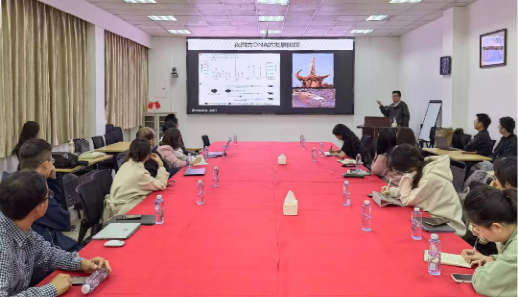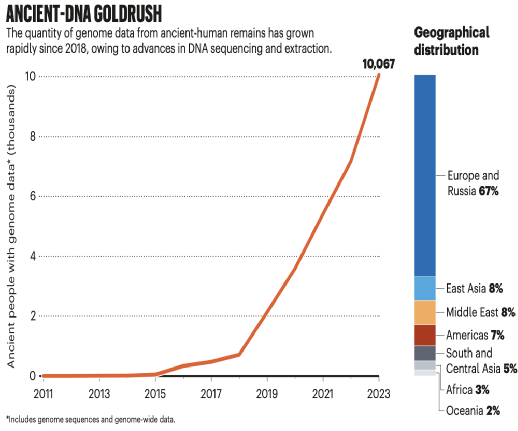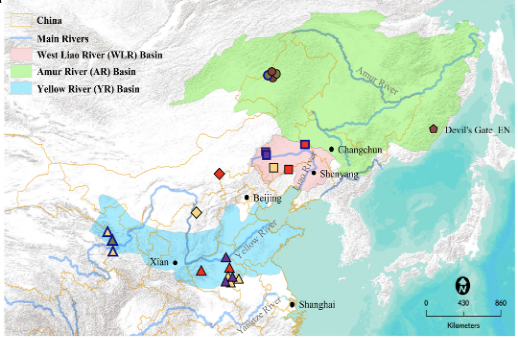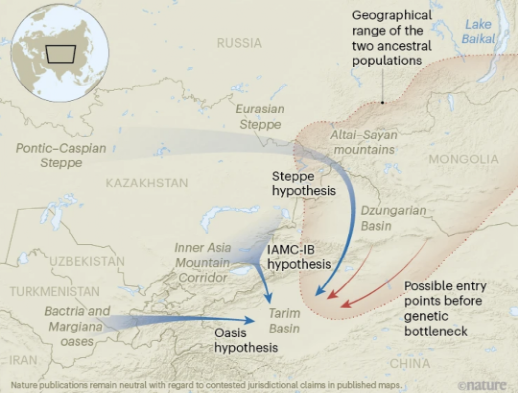Zhang Fan: "Ancient DNA: Invisible Archaeology" & Lecture Communication
On November 10, 2023, the 4th session of the "Archaeological Science Forum" hosted by the Center for Archaeological Science, Sichuan University was held in the conference room on the first floor of the Institute of Tibetan Studies, Wangjiang Campus, Sichuan University. Zhang Fan, Associate Research Fellow, gave a lecture on "Ancient DNA: Invisible Archaeology", which was hosted by Hai-bing Yuan, Associate Professor of the Center for Archaeological Science, Sichuan University.

The speaker started with the basic concepts and genetic characteristics of DNA, especially how single DNA information can be used to trace the origin of human populations. However, there are many problems with exploring the history of ancient human activities based on modern human DNA. The DNA of extinct biological remains, archaeological or historical biological remains can reflect ancient human information such as human phenotypes and disease infections. Limited by preservation conditions, a large number of soil microbial DNA molecules will inevitably be introduced during ancient DNA extraction, and the content of endogenous ancient DNA is low, which is a huge challenge for research work. With the development of high-throughput sequencing technology, capture technology and its application in archaeology, the success rate of ancient DNA extraction has been greatly improved, and ancient DNA research has developed rapidly. As of 2023, more than 10,000 ancient genome data have been published globally.

In 2013, the first ancient genome study in China was published. The Institute of Vertebrate Paleontology and Paleoanthropology of the Chinese Academy of Sciences carried out ancient DNA mitochondrial and chromosome 21 related research on Tianyuan Cave people. The results show that, compared with modern Europeans, Tianyuan Cave people are genetically closer to modern Asians and should be representative of ancient East Asian populations.

In 2020, China achieved remarkable results in ancient DNA research. The main achievements include Ning Chao et al.'s research on the ancient genomes of ancient populations in the Yellow River Basin, West Liao River Basin, and Heilongjiang River Basin in northern China. Their findings show that ancient populations in the Heilongjiang River Basin have maintained long-term genetic stability and continuity, while the Longshan culture population in the Yellow River Basin is genetically more influenced by populations from southern China compared to the earlier Yangshao culture population. The Hongshan culture population in the Liao River Basin is a new population formed by the mixture of populations from the Heilongjiang River Basin and the Yellow River Basin. During the subsequent Xiajiadian culture period, related ancestries from the Yellow River Basin and nomadic populations influenced the formation of ancient groups in the West Liao River Basin.

In 2021, Zhang Fan et al.'s research on the ancient DNA of the Xiaohe population in the Tarim Basin of Xinjiang showed that the ancient Xinjiang Xiaohe population should be a mixture of two ancient ancestral groups in the eastern part of the Eurasian continent in terms of genetics. At the same time, different from the multi-source nature of the material culture of the Xiaohe population, they maintained long-term stability in genetic inheritance. The harsh desert environment of Lop Nur led to the long-term genetic isolation of the Xiaohe population, but did not prevent cultural exchanges with surrounding populations.

Finally, the current research hotspots and future development trends of ancient DNA research were explained. One is to carry out comprehensive research guided by archaeological questions, such as the identification of kinship between ancient individuals. The second is that the study of sedimentary DNA is gradually becoming a hot spot. The use of capture technology to extract animal, plant and ancient human DNA from the soil can reflect the living environment of humans at that time and the impact of human activities on the diversity of ecology and species.
Professor Qun Sun of the School of Life Sciences, Sichuan University, made a comprehensive review. She summarized the achievements of ancient DNA research, put forward the key and difficult points of future research, and called for multi-disciplinary collaboration to overcome difficulties and make ancient DNA research go further and deeper into the international forefront. The participating teachers and students had in-depth discussions on some specific issues of ancient DNA research, focusing on the exchange of issues such as ancient DNA extraction, comparison databases, and ancient DNA cultural interpretation.
